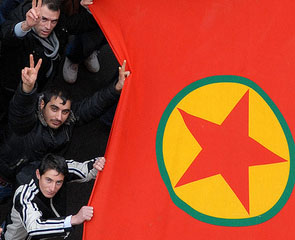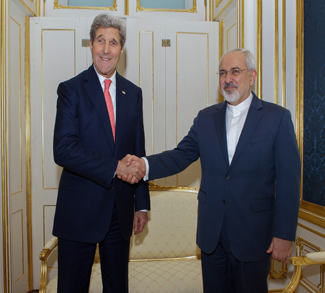It was a remarkably frank admission for a European official. What was surprising was not so much that EU Justice Commissioner Vĕra Jourová told the French daily Le Figaro that the number of Europeans to have gone to Syria to partake in jihad could be as high as 6000. This number was higher than that hitherto acknowledged by EU officialdom, but not dramatically so. What was surprising was that Jourová admitted that she and her colleagues suspect that even this figure “severely underestimates” the real number of euro-jihadists.
Jourová’s remarks point to an incongruity that has become increasingly glaring over the course of the last year. Almost every day now, there are new media reports on European Islamists that have gone to Syria. Whole families are known to have gone, including the extended “clan” of the Toulouse Jewish school killer Mohamed Merah. Numerous recruits are known to have gone even from just the same small towns. Some twenty (including wives and children) are reported to have gone from the French town of Lunel (population: 26,000); eleven from just the Lohberg neighborhood (population: 6000) of the German town of Dinslaken. The appearance of German-, French- and Dutch-speakers in jihadist propaganda videos has become a commonplace; and, though Twitter and Facebook have, in the meanwhile, adopted a vigorous policy of deleting them, European jihadists have created hundreds, if not thousands, of Twitter accounts and Facebook pages.
But despite the prima facie evidence of a massive flow of European jihadists to Syria, the most widely-cited estimates of their number have remained implausibly modest and are still ensconced in the low thousands. The estimate provided by EU counterterrorism coordinator Gilles de Kerchove seemed to hover endlessly at or around the threshold of 3000. It is only recently, in an apparent acknowledgement of just how incongruous this number had become, that de Kerchove has ventured to revise his estimate somewhat upward. Thus, at the end of March, de Kerchove told the Foreign Affairs committee of the European Parliament that the number is now “closer to 5000.” Unlike his colleague Jourová, however, de Kerchove has shown no sign of doubt about the reliability of his figures.
It should be noted that de Kerchove is the official EU point man on the issue. Despite her impressive-sounding title, Jourová is so little known that an English-language AFP dispatch on her remarks misspelled her name as “Jouriva.” Moreover, her title is less impressive when one realizes the largely ad hoc character of the portfolios assigned to EU commissioners. Thus, her full title is, more precisely, “Commissioner for Justice, Consumers and Gender Equality.”
Ostensibly independent estimates have been no less conservative. Thus, for example, the even more incongruous figure of “up to 2000” European jihadists long served as the reference for, in particular, the American media. The number is drawn from a study undertaken by the International Centre for the Study of Radicalisation (ICSR), and part of the problem is that this study, which was first published in December 2013, had clearly become outdated. The ICSR finally addressed this problem in January of this year, updating its figure to “almost 4000.”
But there is also a methodological problem with the independent estimates. It is hardly surprising that they would mirror those of de Kerchove, since on closer inspection the national figures from which they are calculated turn out largely to consist of just the official published estimates of European governments. And there is the rub. For at least as concerns those countries representing the main continental European suppliers of jihadists – i.e. France, Germany, Belgium and the Netherlands – it is clear that these official figures severely underestimate the true extent of the phenomenon.
(The problem is exacerbated by the fact that the independent monitors appear to have trouble keeping abreast of the latest national statistics. This is presumably due to linguistic limitations. Thus, when the ICSR published its most recent estimate in January, it included an estimate of some 100-150 Austrians. At the time, the official figure of the Austrian government was already 160. It has since been raised to 190.)
Last November, in a first major breach of the relatively reassuring picture painted by European officialdom, the Frankfurter Allgemeine Zeitung (FAZ) revealed that per German intelligence, the real number of German jihadists in Syria is four times higher than the officially acknowledged figure. The official figure at the time was 450. It has since been raised to 680. The source given for the scoop was an unnamed member of Germany’s domestic intelligence agency, the Verfassungsschutz. But, even though the source was unnamed, on the very same day the gist of the story was confirmed by none other than the agency’s head, Hans-Georg Maaßen.
Without venturing to quantify it, Maaßen confirmed that a significant discrepancy exists between the official figure and the real one. Referring to the official number, Maaßen told Germany’s RBB Info radio, “Those are people that we can identify by name. Our problem is that there are constantly people turning up in Syria and Iraq that we previously did not know at all…So, the unknown number [Dunkelziffer] is very large.” In other words, the official number is just a headcount of those German jihadists who are known by German authorities to have travelled to Syria or ISIS-controlled territory in Iraq, not an estimate of the real number of Germans to have done so.
No French official has been as candid as Maaßen and, unlike Germany’s FAZ, no French media has shown any inclination to question the official figures. Nonetheless, closer inspection of the French figures makes clear that they too represent just a headcount and not a realistic estimate. This is obvious from the precision of the statistics published from time to time by the French Ministry of the Interior. Thus, according to statistics made public in March, exactly 1422 French partisans of jihad either had been in Syria or were presumed to be on their way. Of these, exactly 413 were said to be presently in the country. Per the declarations of Prime Minister Manuel Valls, these figures have since risen to 1550 and 434 respectively.
French jihadists themselves have suggested far higher numbers. Thus, in March 2014, a French jihadist going by the name Abu Shaheed told the French weekly Paris Match that there were “at least” 500 French jihadists fighting just with ISIS. At the time, the official French figure was 250 for all jihadist factions in Syria, including also the al-Qaeda-affiliated Jabhat al-Nusra, which many French jihadists are known to have joined. “The place is covered with French [recruits],” Abu Shaheed said, “I couldn’t even count them all.”
Moreover, there is reason to believe that even the headcounts err on the low side. In April 2014, the official count of Belgians to have joined the jihad in Syria stood at some 150. But an independent count conducted by Middle East specialist Pieter Van Ostaeyen and journalist Gus Van Vlierden arrived instead at a number of nearly 400.
The Van Ostaeyen/Van Vlierden count was based exclusively on publicly available sources, including, notably, social media like Twitter and Facebook. At the time, Van Ostaeyen offered some substantive reasons to infer that the real number must be still higher. These included the significant underrepresentation of Belgium’s French-speaking Wallonia region in the count. But there is also a methodological reason: discreet jihadis who shy away from publicizing their engagement on social media will obviously tend to remain hidden from this sort of analysis.
In the meanwhile, perhaps in response to the attention that the Van Ostaeyen/Van Vlierden count received, Belgian authorities have significantly increased their own count. But per Van Ostaeyen’s latest update in April 2015, his and Van Vlierden’s figures are still running roughly 50% higher than the official ones.
As for the Netherlands – the fourth member of the “big four” continental European suppliers of jihadists – in January the Dutch daily De Telegraf reported that the real number of Dutch participants must be “far more numerous” than the official statistics suggest. The report cited multiple expert sources. The official number was at the time 169. It has since been raised to 190.
Edwin Bakker, the director of the Center for Terrorism and Counterterrorism at the University of Leiden, noted that the official figure represents a “cautious, conservative estimate,” which only includes persons whose participation in the Syrian jihad is certain. Bakker emphasized that those who go to Syria to fight “are aware of the consequences” and, hence, have an interest in keeping their involvement “less openly recognizable.”
This sentiment was echoed by a prominent Dutch Islamist who goes by the name “Abe Zakaria.” Abe Zakaria told De Telegraf that there are a “considerable number” of Syria recruits that the authorities “know nothing about.” He estimated the real number of Dutch participants at anywhere from 300 to 500.
So, how many Europeans have really joined the Syrian jihad? One does not need to go as far as a recently-leaked Spanish police report, which puts the number at as high as 100,000. (The low edge of the Spanish police estimate is 30,000.) But there is no reason to believe that the security services of other European nations – and, in particular, the French – are any more omniscient than their German colleagues. There must clearly be a substantial “unknown number” in their cases as well. However unwelcome this realization may be for European officials, credible estimates – as opposed to mere headcounts – of Europeans involved in the Syrian jihad must undoubtedly now be made not in the thousands, but in the tens-of-thousands.
John Rosenthal is a guest contributor to Geopoliticalmonitor.com, and author of The Jihadist Plot: The Untold Story of Al-Qaeda and the Libyan Rebellion. You can follow him on Facebook here.




